SUNTORY TAKES AN INNOVATIVE APPROACH TO RECYCLING
For a relaxing time…
It’s mildly amusing, clicking on to indy filmmaker Sophia Coppola’s Lost In Translation website, to see whisky bottles, with scrollover in a garish neon pink blaring “Buy Suntory.” Adjacent is an aging, jaded Bill Murray whose character is paid to endorse Suntory Whiskey, Humphrey Bogart style, and who pockets a cool two million to do it. A reference both to the flickering neon this city is famous for, and to the glitterati (think Brad Pitt and the Beckhams) who have returned from these shores with substantially fatter wallets than when they arrived. As Suntory no doubt handed over a large wad of cash for her project, perhaps it’s evidence of Coppola’s tongue-in-cheek-humor that when you follow the link behind the Suntory bottles, you arrive at her biography. Product placement issues aside, inadvertently or not, Coppola has tapped into a market people over here feel passionate about.
…it’s Suntory time…
Absent from the corporate histories of Japan’s major whisky producers is the story that that binds them together. Back in 1918, a young man with a family history soaked in sake production crossed the ocean to study the techniques of whisky brewing at Scotland’s University of Glasgow. Returning home with Scottish bride a few years later, Masatake Taketsuru was hired by an established wine producer, Suntory founder Shinjiro Torii. Together they set up Japan’s first whiskey distillery in 1922 in Yamazaki, at the foot of the Tennozan mountain. Six years later, Japan’s first whisky, Shirofuda was launched. Further years of trial-and-error refinement continued until 1937, when Suntory released what it terms its first ‘real’ whisky, Kakubin Pure Malt Whiskey, so named for the square shape of its bottle. By 1934, the two men had parted ways, and Taketsuru had moved to Hokkaido, where he went on to found what became the Nikka Whiskey Distilling Co., a recent acquisition of Asahi’s. Each are credited by their respective conglomerates with the oeuvre to introduce Japanese characteristics in to whiskey to a culture that was certain fine whiskey could not be created outside Scotland. British whiskey connoisseur and trade writer Michael Jackson once noted, “The Scottish blender was orchestrating Beethoven; the Japanese was performing a Vivaldi string quartet.” Unlike a Scotch whiskey post dinner tipple, Japanese whiskies are considered an accompaniment to a meal, designed not to overpower the subtle nature of Japanese flavor. Love it or hate it, it’s also not widely known that water and whiskey is Japanese innovation. Termed mizuwari, the story goes that in certain Ginza establishments there was only way to drink whisky during the bubble, and that was with a few rocks of iceberg, fresh from the north pole.
 Whiskey production Japanese style
Whiskey production Japanese style
Sure these days many corporations are obliged to dispose of their waste products in an environmentally friendly manner, but while it’s one thing to conform to set environmental waste regulations, it’s another to be proactive about it. As water purity is paramount in the production process, Suntory purchased 800,000m2 of forest, now a bird sanctuary, surrounding their Hakushu distillery to ensure the continued purity of their water source. North American oak must be at least 70 years old, and is often up to two hundred years old, before it is made into barrels. Add to this potentially fifty years in reuse as a whiskey barrel, and you have oak that can be hundreds of years old. With 50,000 barrels rolling through the back door of Kawasaki’s distillery each year, some form of waste management initiative was needed.
Enter Team Barrel
Team Barrel is a six-person unit employed by Suntory, with the express purpose of finding some meaningful task for whisky barrels in their twilight years, in line with Suntory’s reuse, reduce, recycle anthem. While the link between liquor and lounge suites may seem abstract to some, it’s just one of the innovations brought to the production line by the B team. The process of transforming oak barrel into furniture seems relatively simple. Barrels are knocked to pieces and steamed at high temperature until they straighten, from which form the furniture is then constructed. From the moment the last scerics of whiskey drop from the cask until the new furniture sits fresh on the factory floor takes a surprisingly short two months.
Kakusan Furniture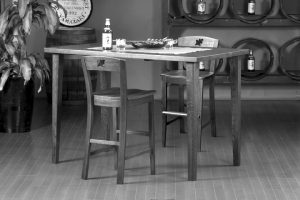
Cut to Toritsu-Diagaku station, Tokyo-Tokyu line, Tokyo. A 10-minute stroll will find you in a showroom filled with wood-grain finishes; neutral, simple and harmonious. It seems apt that this furniture warehouse overlooks a sleepy residential area for as far as the eye can see. For the same reason, it’s fitting that bottles of whisky dot various shelves and enclaves, and assorted barrels line the walls. In reference to the square Kakubin bottle, the line is labeled `Kakusan’. Surveying the floor, you`ll see one of the table sets is a sombre, yet warm brown with something Scandinavian about its bold lines. More austere Japanese design principles are evident in a boxy panel cabinet. Oak grain features in all pieces, staining serving as a highlight, or a soft mute. High backed, flowing forms of some dining chairs contrast with the abrupt, modernist trend of others. All dining and kitchenware pieces can be customized to suit your criteria, from color to cut to length, but expect to wait a month for the service. Manager Junji Masaki notes that the eight shades are exclusive to Suntory.
Making your way up to the third floor, you’ll find lounge suites, and big chunky benches, perfect for outdoor patios. The showroom sells original barrels as well, for the home designer who prefers a raw edge. But stand-alone in one corner are perhaps the most expensive items in the Kakusan catalogue — oak barrel Taiko drums. Sony reports that world-famous Taiko drummer Mr. Eitetsu Hayashi was surprised by the sound quality, commenting, “This sounds as good as one of the world’s finest single-wood Taiko drums.” And for a mere ¥378,000 you too can take a stick to it.
Sail Away
But this initiative extends not to furniture alone, nor is it entirely new: Team Barrel have been busy. Thirty pieces of furniture made from Suntory’s oak barrels were exhibited at the Milan International Furniture Fair in 2002. Tokyo-based Pioneer Corporation brought out a limited run of 1000 Suntory oak barrel `Pure Malt` speakers. Interestingly, listeners were subjected to an experiment as to whether they could pick the tone of the oak barrel speakers. One hundred percent noted the difference. Not one to miss a show, Yamaha also got into the act with a guitar crafted from recycled barrel staves.
This year will see almost 100 of Suntory’s barrels reconstituted as a white-oak hull of Suntory Malt’s Mermaid III. Kenichi Horie, famed Japanese marine adventurer, is scheduled to make a round-the-world attempt in this yacht in early October. Comprised almost entirely of recyled materials, Suntory Malt’s Mermaid III will leave from Shin-Nishinomiya harbor in Hyogo Prefecture, on a voyage expected to last about 8 months.
Other Whiskey tidbits
Be whisked away on a tour of Suntory’s distilleries.
Suntory operates two whiskey distillery tours, one at each of their Hakushu and Yamazaki distilleries. With a telephone booking and a bit of pre-planning, for groups of over ten people an English speaking guide will be at your service. Lubricating the population of western Japan with medium-body single malt whiskies, the Yamazaki distillery is located 25 minutes from JR Osaka station or 35 minutes from JR Kobe station. A further 10-minute amble from JR Yamazaki station will lay bare the vista of a redbrick building nestled at the foot of mountains cloaked in green. Suntory Yamizaki Distillery, 5-2-1 Yamazaki, Shimamoto-cho, Mishima-gun, Osaka (075-962-1423).
For a refreshing daytrip out of the city of skyrises, the Hakushu Distillery in Yamanashi prefecture is a chance to see the whiskey production process while ensconsed in the beauty of Japan’s Southern Alps. Immerse yourself in Japan’s whisky history with a visit to the adjacent Suntory Whiskey Museum. Eighty years of whiskey production on display. Suntory Hakushu Distillery Torihara, Hakusu-cho Kitakoma-gun, Yaminashi, 10 minutes by taxi from JR Kobuchizawa station (0551-35-2211).
A dram with your dinner
In the west it’s usual to take a tipple in those twilight hours between work’s end and ushering evening’s beginning, or as a post dinner drink. With all the fuss that is made about Japanese whiskey being the perfect accompaniment for your Japanese dish, we recommend Nishi Azabu’s Waketokuyama restaurant. Voted Zagat’s best restaurant for Japanese food in Tokyo, here’s an opportunity for you to test out the hype for yourself. Waketokyama, Yahata Building 3Fl, 4-2-13 Nishi-Azabu, Minato-ku (03-3400-2968) Roppongi, 5-18-20 Roppongi, Minato-ku (03-3585-5778). To sample whiskies from around the world, stop in at bar Maduro, page 66.
Did you know?
Whisky-worshipping is now a global phenomenon, but not a recent one. Aqua-vitae, or `water of life` was the first moniker whisky made the record books under, in the land of Scotch in 1494. We have the gaelic translation, ueisge beatha, to thank for our current day corruption of the word. Share and share alike, the annual 0.5 to 2 percent evaporation rate of whiskey is termed the angel’s share. Why should the factory workers have all the fun?
No stranger to the expat set, the Kinokunia supermarket chain regularly finds its members trawling their aisles in search of imported delicacies. With a hefty side store of alcohol, at Kinokunia you’ll find most of the Suntory whisky pure malts and blends. At ¥80,000 a bottle, if you fancy a whiskey for a special occasion, plan ahead because Suntory Hibiki 30-year-old requires placement of an order. Kinokuniya Supermarket, Omotesando Kita-Aoyama 3-11-7. Open 9:30am-8pm daily (3409-1236).
Story by Melanie Burton
From J SELECT Magazine, March 2004



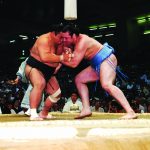
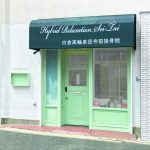

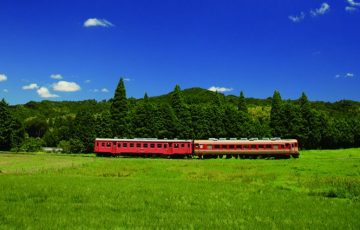
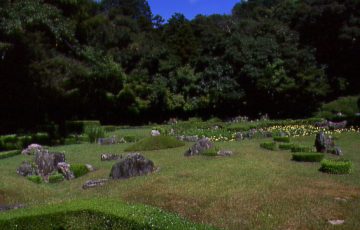
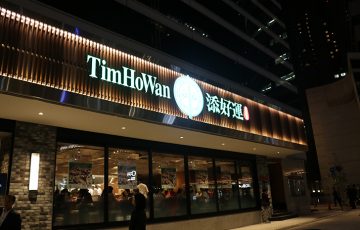


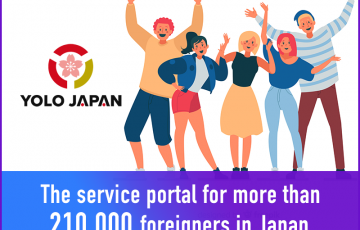
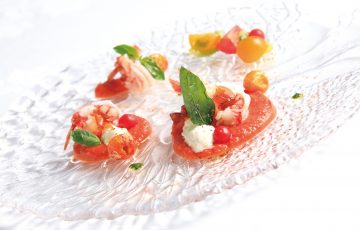


Recent Comments